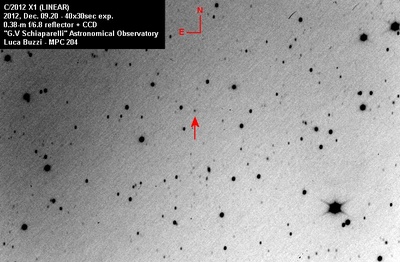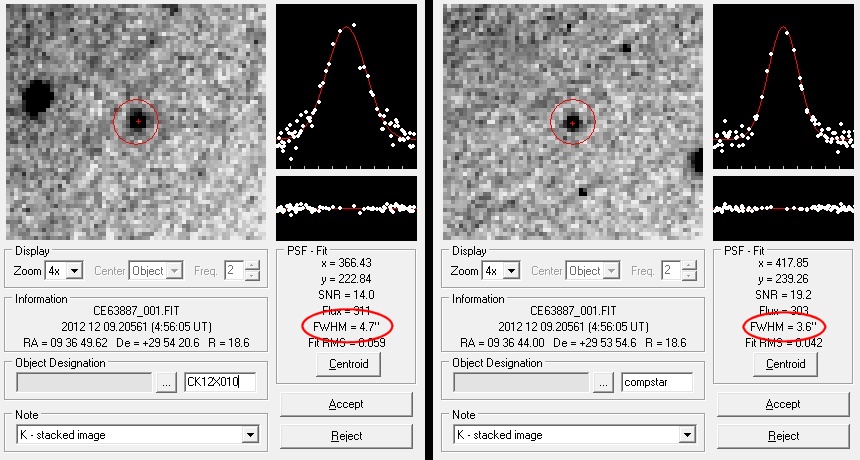New comet C/2012 X1 (LINEAR)
December 18, 2012
I was able to image it the following night with a 0.38-m f/6.8 reflector. Visually (i.e. on the screen) it appeared slightly diffuse respect to stars, and the analysis with the “FWHM method” clearly revealed its nature: profile 30% larger than stars nearby, and a coma 8” wide.
This is again a demonstration of how good is the FWHM method (used largely in our T3 project) in discerning comets among asteroids.
Many other observatories detected it, and results were published in CBET 3340 (subscription required) and astrometry, together with preliminary parabolic orbital elements, in MPEC 2012-X70.
By Luca Buzzi

